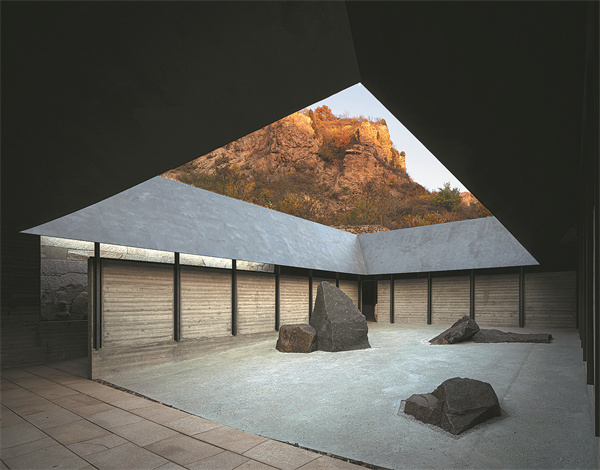

Critical acclaim
Li Xiangning, head of the College of Architecture and Urban Planning, Tongji University, explains that the Shangyuan is divided into three parts.
"The entrance, located above the mountain, is dry and consists of pebbles, coarse sand and white stones, reminding me of the deserts of Arizona," Li says.
The inner courtyard gives him "a sense of liveliness, much like a garden".
"Finally, arriving at the Zen hall with its carbon fiber roof, I feel a sense of delicacy and refinement."
Zhang Bin, an architect from Atelier Z+, a cross-disciplinary design firm in Shanghai, is also impressed by the building. He compares it to a spacious, golden treasure box with a wide, stable base. "The building is not only aesthetically pleasing, but also spacious inside, giving a sense of vastness and profundity," Zhang says.
To minimize interference with nature, the structure was built in the mountains using the resources at hand. It sits on a flat piece of land that had once been a terraced farm built by villagers above an abandoned coal mine.